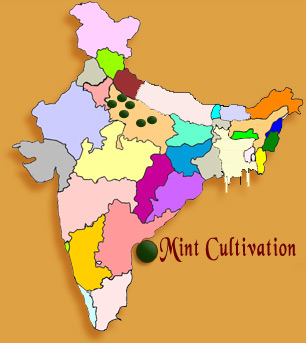MINT
Introduction
Mint has always been used for a lot of centuries. The name arrives from the Greek myth of the nymph Minthe, who fascinated the consideration of Hades. Hades' wife, the jealous Persephone, assaulted Minthe and was in the course of trampling her to death when Hades crooked her into the herb and she was ever sacred to him since then. A symbol of warmth and wisdom, the very aroma of the herb reanimates the spiritcha, Pliny tells us. Prehistoric Hebrews sprinkled mint on their synagogue floors so that every footstep would lift its scent. Prehistoric Greeks and Romans rubbed desks with mint before their guests turned up. The Romans brought in mint and mint mush to Britain. The pilgrims brought in mint to the United States on board of the Mayflower. The Japanese have prepared peppermint oil for a number of centuries and the oil is further treated to fabricate menthol.
The scent of mint is known to keep rats away and pennyroyal is also observed as an useful insecticidal against fleas and aphids. Mint is a perpetual herb with creeping root track and an vertical stem, 1-2 quadrangulate pronged with short dense hair. Leaves are 2.5 - 5cm in length, oblong-ovate. Flowers are in supplementary whorls, nothing at the top. Plant grows to a height of 0.4-0.8 mtr. Branching generously, flowers blossoming in May-June and again in September-November . Pepper Mint , Bergamot Mint and Spear Mint are also commercially grown though on a lesser scale. These types are morphologically alternative to that of Japanese Mint.
Common Names
Mentha piperita is the scientific botanical name of the mint plant. In the common languages of India ie., in Hindi it is called as Pudina; in Bengali it is called as Pudina; in Gujarati it is called as Pudina; in Kashmiri it is called as Pudyanu; in Malayalam it is called as Puthina; in Marathi it is called as Pudina; in Punjabi it is called as Pudina; in Tamil it is called as Puthina; in Telugu it is called as Pudina; in Urdu it is called as Pudina.
History
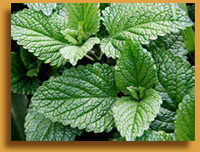
People perfumed their baths and encumbered their homes with mint because of its fresh smell. In the eighteenth century, mint was prized for its medicinal uses. Remedies for all from colic, to digestive odors, to mad dog bites are found in mint. When the colonists came to the New World they brought beside their mints for teas for headaches, heartburn, indigestion, gas and insomnia. They moreover drank mint tea for enjoyment, not only because it tasted excellent, but also because it was not taxed.
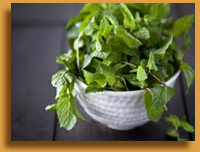
Two unfamiliar persons were walking through a village. The villagers disregarded them and offered no food or drink. Finally an elderly couple, Philemon and Baucis, offered them meal. By the time the four sat down for their feast, the couple rubbed the desk with mint leaves to clean and freshen it. The strangers were actually the gods Zeus and Hermes in cover. As a prize for the hospitality Philemon and Baucis had revealed them, the gods converted their humble home into a temple. Mint therefore became the icon of hospitality.
Uses
Cooking
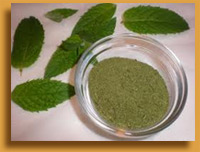
Medicine
Mint is one amongst the herbs that has it all. It grows like a wild plant but is absolutely safe for use, and is a brilliant remedy for reducing symptoms linked to digestion and it tastes really good while going down the throat, They are now served after-dinner virtually everywhere you go for some reason. Mint can also be used as a hunger stimulant. It decreases hunger for a short time, but when the effect wears off the hunger returns much stronger than before. For those who are lucky enough gaining a few pounds, a tea might be taken 30 minutes before a meal for hunger stimulation.
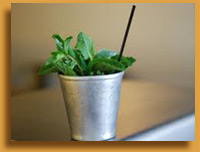
Mint Cultivation in India
